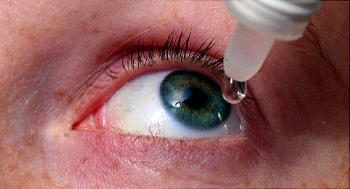How to Stop Finger Pain After Using Computer With 8 Easy Tips
 |
| Relieve fingers pain after using computer. Photo: New Mexico Orthopaedics |
1. See your doctor
There are a variety of causes for hand pain, and the appropriate treatment will depend on the type you have. For example, some types of injuries are alleviated by wearing a hand brace, while others are made worse. Acupuncture and a healthy diet can also be successful ways to reduce pain.
2. Take frequent breaks
Most ergonomists recommend taking at least four typing breaks per hour: Three for thirty seconds and one for three minutes. During these breaks, close your eyes so that they get a break as well. If possible, structure your work so that typing tasks are interspersed with making phone calls, attending meetings, etc.
3. Keep your fingernails short
Long fingernails make it more difficult to maintain a good typing position (wrists straight, fingers pointed down and slightly curved), and may also interfere with mousing comfort.
4. Make sure you're sitting properly
Current ergonomic research suggests that leaning back slightly while typing can be more beneficial than sitting perfectly straight. While really good chairs tend to be expensive, less complex modifications to standard environments may also be effective. For example, filling a fanny pack with foam and strapping it around a chair can make a good lower back support. Foot rests can also contribute to proper positioning and typing comfort.
5. Try using forearm supports
Many people report immediate pain relief from using adjustable Ergorest supports, which position the arms and hands automatically into proper typing position. Use of these supports assumes that your workstation has a lip so that the supports can be attached. More information and a photo are available from Infogrip. (If you have shoulder pain in addition to hand pain, be aware that the Ergorest may increase rather than relieve discomfort.) Note that using this type of adjustment does not mean you should continue without seeking other treatment or professional advice. Changing your position with something like this may only be a temporary fix and you should still find more permanent corrections.
 |
| Photo: Gold Touch |
6. Explore alternative mice
Built into every Windows and Mac operating system is a utility called MouseKeys, which allows you to use the number pad (on the right side of most keyboards) to move the cursor. If this isn’t a sufficient option, there are a wide range of alternative mice, including some that are hand-held, some that require little or no finger movement and some that allow the wrist to be held in a vertical position.
7. Try using adjustable keyboards
Many people find that typing with their wrists held vertical is more comfortable than the traditional position with wrists parallel to the desktop. It can take a surprisingly short time for touch typists to get used to this position. Keyboards that can be adjusted to accommodate this position include Goldtouch and Kinesis Maxim
8. Try using other types of alternative keyboards
Flexible keyboards require only a gentle touch to activate, and some people find it more comfortable than the standard keyboard. Beware, though, of buying keyboards simply because they are labeled "ergonomic"; there is no standard for approving use of this label, and what's genuinely ergonomic for a beefy football player may actually present more problems for a petite gymnast (and vice versa).
| Your fingers are flying across the keyboard, shooting off emails, memos, proposals, summaries and updates. Those impressive typing skills serve you well. But what happens when all that typing leads to aching wrists? If you have occasional achiness in your wrists after a long day of typing, it’s probably nothing to worry about, says Dr. Seitz — especially if it goes away when you stretch or resolves within a few days. But if it persists (or keeps coming back in the same spot), it’s time to see a doctor to find out what’s going on. Treatments vary, but often, simple remedies such as wrist braces or the guidance of a certified hand therapist can help. “Pain is a defense mechanism. It’s telling you there’s something wrong,” Dr. Seitz says. “If it’s painful and not going away, get it checked out.” |
Conclusion
There are other options for hands-free computer use, including infrared technologies operated using head movement and systems that track eye movement. While these options are expensive and complex, they are available as solutions where neither hand nor speech use are possible.
 | Tricks and Tips to Wake up Early every morning You often feel that it is very difficult to wake up early each morning, don't you? You want to change it quickly but don't know ... |
 | How to Beat Sore Throat during Cold Winter Days Winter has already come. Do you know how to protect youself from a sore throat during these Winter days? If not, don't ignore some effective ... |
 | How to refresh tired and hydrate dry eyes? Dry eyes occur when your tear glands don’t produce enough tears to lubricate your eyes. This condition can be uncomfortable and painful. People should be ... |


























